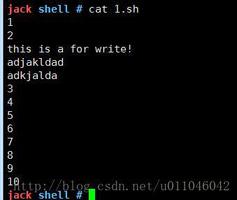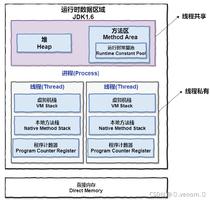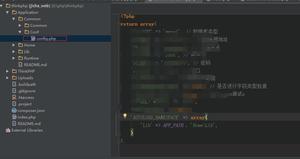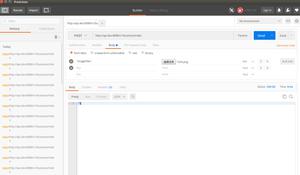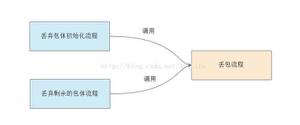对pandas进行数据预处理的实例讲解[Python框架]
![对pandas进行数据预处理的实例讲解[Python框架]](/wp-content/uploads/new2022/20220602jjjkkk3/1582230150_1.jpg)
引入包和加载数据
import pandas as pdimport numpy as np
train_df =pd.read_csv('../datas/train.csv') # train set
test_df = pd.read_csv('../datas/test.csv') # test set
combine = [train_df, test_df]
清洗数据
查看数据维度以及类型
缺失值处理
查看object数据统计信息
数值属性离散化
计算特征与target属性之间关系
查看数据维度以及类型
python;toolbar:false">#查看前五条数据print train_df.head(5)
#查看每列数据类型以及nan情况
print train_df.info()
# 获得所有object属性
print train_data.describe(include=['O']).columns
查看object数据统计信息
#查看连续数值属性基本统计情况print train_df.describe()
#查看object属性数据统计情况
print train_df.describe(include=['O'])
# 统计Title单列各个元素对应的个数
print train_df['Title'].value_counts()
# 属性列删除
train_df = train_df.drop(['Name', 'PassengerId'], axis=1)
缺失值处理
# 直接丢弃缺失数据列的行
print df4.dropna(axis=0,subset=['col1']) # 丢弃nan的行,subset指定查看哪几列
print df4.dropna(axis=1) # 丢弃nan的列
# 采用其他值填充
dataset['Cabin'] = dataset['Cabin'].fillna('U')
dataset['Title'] = dataset['Title'].fillna(0)
# 采用出现最频繁的值填充
freq_port = train_df.Embarked.dropna().mode()[0]
dataset['Embarked'] = dataset['Embarked'].fillna(freq_port)
# 采用中位数或者平均数填充
test_df['Fare'].fillna(test_df['Fare'].dropna().median(), inplace=True)
test_df['Fare'].fillna(test_df['Fare'].dropna().mean(), inplace=True)
数值属性离散化,object属性数值化
# 创造一个新列,FareBand,将连续属性Fare切分成四份
train_df['FareBand'] = pd.qcut(train_df['Fare'], 4)
# 查看切分后的属性与target属性Survive的关系
train_df[['FareBand', 'Survived']].groupby(['FareBand'], as_index=False).mean().sort_values(by='FareBand', ascending=True)
# 建立object属性映射字典
title_mapping = {"Mr": 1, "Miss": 2, "Mrs": 3, "Master": 4, "Royalty":5, "Officer": 6}
dataset['Title'] = dataset['Title'].map(title_mapping)
计算特征与target属性之间关系
object与连续target属性之间,可以groupby均值
object与离散target属性之间,先将target数值化,然后groupby均值,或者分别条形统计图
连续属性需要先切割然后再进行groupby计算,或者pearson相关系数
print train_df[['AgeBand', 'Survived']].groupby(['AgeBand'], as_index=False).mean().sort_values(by='AgeBand', ascending=True)
总结pandas基本操作
”'
创建df对象
””'
s1 = pd.Series([1,2,3,np.nan,4,5])
s2 = pd.Series([np.nan,1,2,3,4,5])
print s1
dates = pd.date_range(“20130101”,periods=6)
print dates
df = pd.DataFrame(np.random.rand(6,4),index=dates,columns=list(“ABCD”))
# print df
df2 = pd.DataFrame({“A”:1,
‘B':pd.Timestamp(‘20130102'),
‘C':pd.Series(1,index=list(range(4)),dtype='float32'),
‘D':np.array([3]*4,dtype=np.int32),
‘E':pd.Categorical([‘test','train','test','train']),
‘F':'foo'
})
# print df2.dtypes
df3 = pd.DataFrame({'col1':s1,
'col2':s2
})
print df3
'''
2.查看df数据
'''
print df3.head(2) #查看头几条
print df3.tail(3) #查看尾几条
print df.index #查看索引
print df.info() #查看非non数据条数
print type(df.values) #返回二元数组
# print df3.values
print df.describe() #对每列数据进行初步的统计
print df3
print df3.sort_values(by=['col1'],axis=0,ascending=True) #按照哪几列排序
'''
3.选择数据
'''
ser_1 = df3['col1']
print type(ser_1) #pandas.core.series.Series
print df3[0:2] #前三行
print df3.loc[df3.index[0]] #通过index来访问
print df3.loc[df3.index[0],['col2']] #通过行index,和列名来唯一确定一个位置
print df3.iloc[1] #通过位置来访问
print df3.iloc[[1,2],1:2] #通过位置来访问
print "==="
print df3.loc[:,['col1','col2']].as_matrix() # 返回nunpy二元数组
print type(df3.loc[:,['col1','col2']].as_matrix())
'''
4.布尔索引,过滤数据
'''
print df3[df3.col1 >2]
df4 = df3.copy()
df4['col3']=pd.Series(['one','two','two','three','one','two'])
print df4
print df4[df4['col3'].isin(['one','two'])]
df4.loc[:,'col3']="five"
print df4
'''
5.缺失值处理,pandas将缺失值用nan代替
'''
print pd.isnull(df4)
print df4.dropna(axis=0,subset=['col1']) # 丢弃nan的行,subset指定查看哪几列
print df4.dropna(axis=1) # 丢弃nan的列
以上是 对pandas进行数据预处理的实例讲解[Python框架] 的全部内容, 来源链接: utcz.com/z/539673.html

